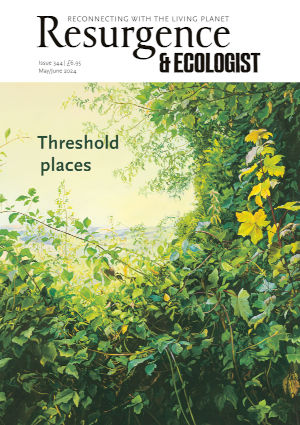All of us, or so the saying goes, are made of stars. Our skin, blood, bones are all formed from stardust: the revenant atoms from the furnace-like hearts of long-dead stars. For those miraculous few decades that we hold our mortal shape – before those atoms zip off somewhere else to form something altogether new – each one of us is yoked to the heavens and the sublime infinitude of space. This thought provides one of the starting points for leading cosmologist Roberto Trotta’s new book, Starborn: How the Stars Made Us – and Who We Would Be Without Them.
It is clear how the stars have shaped Trotta’s life, both inspiring questions and hinting at the answers during his academic career. In one of the personal moments that shoot like broom stars throughout these pages, it is also the wonder of the night sky that provides a celestial omen on an early date with the woman who would become Trotta’s wife. For Trotta, however, the issue is of course far bigger than the individual. At a time when roughly 80% of the world’s population lives in places where the stars have been snuffed out by the orange glow of artificial lighting, humans have lost our intimacy with the cosmos. Trotta, then, is on a mission to remind and reunite – to show us how a universal connection to the stars has shaped human civilisation and brought about our very existence as a species.
Indeed, one of the most fascinating ideas that Trotta explores is that it was the night sky that lifted the mind of Sapiens. The ancient light of the stars functioned, he says, as “a cognitive gym” – offering early humans the mental stretch required to grasp the notion that stars could be a representation of something bigger. (His example of the Seven Sisters being chased by a hunter is particularly gripping.) It is possible, Trotta contends, that while the Neanderthals, framed as competitors to early humans, remained largely isolated, Sapiens benefited from a star-powered social network that unified a species during the hardest of times.
The book’s undoubted success lies in both its ambitious breadth and its clarity as Trotta conducts a stellar survey of almost every aspect of human life and history. He explains how we are all still tied to the stars by taut threads, even if they are “faint like a spiderweb glittering in the moonlight”. Every glance at a clock face, Trotta says, is a glimpse of the 12 star groups that the Egyptians used to mark the passing of the night 4,000 years ago. The GPS on our phones and in our cars? Only possible thanks to Einstein’s theory of general relativity, which again would have been inconceivable in a world without stars. In fact, Trotta explains, astronomy was the ‘midwife’ to all of the sciences. Yes, modern scientific method and scientific thought stands on the shoulders of giants – Copernicus, Galileo, Newton, Laplace, Gauss and Einstein – but it is also suspended by the stars and an understanding of the motion of planets and the laws that moved the skies.
As Trotta explores how the stars have given us clocks, maps, compasses, muses, gods, beauty and the sublime – helping us navigate the world both physically and spiritually – he also devises a thought experiment: imagining a world where the night sky held no stars at all. The idea of planet Caligo is an excellent model to underline how diminished, how lost a starless humanity would be, even if some of Trotta’s fiction, which bookends chapters, occasionally feels a little heavy-handed.
Starborn’s cultural contribution, though, should not be underestimated. This is an inspiring book that, through its explorations, through its challenges, will change the way many people think about and relate to the limitless depths of the night sky. One can only hope that with this new understanding will come a fresh determination to defend the fragile light of the stars from the ‘progress’ they helped bring about.
Starborn: How the Stars Made Us – and Who We Would Be Without Them by Roberto Trotta. Basic Books, 2023. ISBN: 9781529346084.






